Papers by Keith Armstrong

Leonardo, 2021
s from the 2018 Spectra Symposium Part 6 685 topic: systems CuratIng EntanglEmEnt: sCaFFolDIng au... more s from the 2018 Spectra Symposium Part 6 685 topic: systems CuratIng EntanglEmEnt: sCaFFolDIng auDIEnCE EngagEmEnt In art-sCIEnCE ExhIbItIons Katie Dyer and Lizzie Muller In this paper we examine experimental curatorial and interpretive strategies used to engage audiences in art-science exhibitions. We focus on two recent art-science exhibitions concerned with human futures and the impact of technological change: Human+ The Future of Our Species, a touring exhibition generated by the Science Gallery, Dublin, and then developed by the Centre for Contemporary Culture, Barcelona, and the ArtScience Museum, Singapore (2011–2017); and our own exhibition Human non Human, on view at the Museum of Applied Arts and Sciences, Sydney (2018–2019). We describe how a relatively new psychosocial method for audience evaluation called the Visual Matrix has helped us to generate insights into the audience experience of these exhibitions through a process of collective free association and how this method can inform the curatorial process. Human+ and Human non Human aimed to engage audiences in the complex and rapidly changing discourse of the “posthuman.” We examine the role of spectacle, provocation, immersion and world-building in these exhibitions. Against this backdrop we focus on our own iterative approach to curating using the Visual Matrix as a formative tool. We show how we responded to a range of audience experiences of Human+ captured by the Visual Matrix in our curatorial approach to Human non Human. In particular we discuss our attempt to scaffold the audience’s experience of Human non Human with an experimental piece of museum interpretation called the “Entanglement Interactive.” This interactive combination of text, images, videos and audio—available in the exhibition space and online—not only maps the interplay of ideas and objects in the exhibition but also emulates the collective associative work that audiences do in exhibitions, which is revealed in the Visual Matrix. The Entanglement Interactive included user analytics that allowed us to track the pathways audiences created between the resources it presented. In this way both the Visual Matrix and the Entanglement Interactive offer tools to capture the connections and associations audiences make between objects and ideas and so give insights into the processes by which collective experience is formed and new knowledge created in exhibitions. Katie Dyer, Senior Curator Contemporary, Museum of Applied Arts and Sciences (Powerhouse Museum), 500 Harris St, Ultimo, Sydney, 2007, NSW. Email: katie.dyer@maas.museum. Lizzie Muller, Art & Design, University of New South Wales, Paddington Campus, Corner Oxford Street & Greens Road, Paddington, NSW 2021, Australia. Email: lizzie.muller@unsw.edu.au.
The development of a replacement house for Ellen and Mokoena Maphalane's exisiting shack - de... more The development of a replacement house for Ellen and Mokoena Maphalane's exisiting shack - developed as part of the Re-Future Project in collaboration with the program for Innovation in Artform Development, South Africa

Leonardo, 2020
Media artist Keith Armstrong’s collaborative practice has long involved intensive periods of coll... more Media artist Keith Armstrong’s collaborative practice has long involved intensive periods of collaboration with biological scientists and social scientists, developing art-science, creative incubators around periods of ecological fieldwork. Artist Jill Scott views such field trips as unique socio-cultural events which manifest tacit knowledge and social interactions in a given spatial environment where explicit knowledge is prioritised. Armstrong’s participation in art-science research in regional Australia (as ANAT Synapse’s 2012-13 resident at the Australian Wildlife Conservancy) sought to understand practices of reintroduction and conservation biology that aim to recreate or renew historically degraded ecological systems. He asked: How might we improve understandings of these composite ecologies that mesh cultural, biophysical and synthetic elements, leading to improved understanding of the cultural confines of traditional scientific thinking, to foreground better policies for ma...
The interactive artwork Temporal arose from a series of art-science investigations with some of A... more The interactive artwork Temporal arose from a series of art-science investigations with some of Australia’s leading flying fox ecologists. It was designed as a gently evolving meditation upon the complex, periodic processes that mark Australia’s often irregular seasonal changes. These changes directly govern the migratory movements of Australia’s keystone pollinating mammals—the mega bats (or, Flying Foxes). Temporal further calls attention to our increasing capacity to profoundly disturb these partners within Australia’s complex, life-supporting systems

Dictionary of Gems and Gemology
Light of Extinction presents a diverse series of views into the complex antics of a semi-autonomo... more Light of Extinction presents a diverse series of views into the complex antics of a semi-autonomous gaggle of robotic actants. Audiences initially enter into the 'backend' of the experience to be rudely confronted with the raw, messy operations of a horde of object-manipulating robotic forms. Seen through viewing apertures these ‘things’ deny any opportunity to grasp their imagined order. Audiences then flow on into the 'front end' of the work where now, seen through another aperture, the very same forms seemingly coordinate a stunning deep-field choreography, floating lusciously within inky landscapes of media, noise and embodied sound. As one series of conceptions slip into extinction, so others flow on in. The idea of the 'extinction of human experience' expresses a projected fear for that which will disappear when biodiverse worlds have descended into an era of permanent darkness. ‘Light Of Extinction' re-positions this anthropomorphic lament in order to suggest a more rounded acknowledgement of what might still remain - suggesting the previously unacknowledged power and place of autonomous, synthetic creation. Momentary disbelief gives way to a relieving celebration of the imagined birth of ‘things’ – without need for staples such as conventional light or the harmonious lullabies of long-extinguished sounds.
Material Inventions
This chapter examines how the methods, outcomes and transformative potentials of my new media art... more This chapter examines how the methods, outcomes and transformative potentials of my new media arts praxis have been understood by a range of critical commentators from disciplinary perspectives outside of my own ‘home territory’ of media arts. By drawing upon perspectives from Human Computer Interface Design, Engineering, Sustainability Design, Tertiary Education, Communication Design and Public Librarianship I demonstrate how ideas from my arts disciplines have had tangible ‘external’ significance and application.
We live under the enduring shadow of ecological crisis. Contemporary theorists have suggested tha... more We live under the enduring shadow of ecological crisis. Contemporary theorists have suggested that this ‘problem of ecology’ indicates a more general crisis of human subjectivity. Having observed much new media art praxis operates largely without awareness of the ecological implications of those practices I began developing new processes for conceptualising and developing media art works which I termed ‘Ecosophical’. My objective was to discover whether such works could be used to create contexts within which participants might reflect upon connections between the ‘problem of ecology’ and the proposed problem of human subjectivity.
Art-eco-science practitioner Keith Armstrong is committed to a hybrid practice. He collaborates i... more Art-eco-science practitioner Keith Armstrong is committed to a hybrid practice. He collaborates in the field with ecological scientists recording biodiversity, species loss and extinction and creates works that play a role in redesigning social relations to natural systems. Currently working closely with aerial robots (aka drones or UAVs), Armstrong wants to understand how ‘we’ might better use drones, away from societal preoccupations with surveillance, privacy, AI and remote warfare, and our apparent drive to create bleak ‘new natures’. In this conversation, Armstrong and sustainability scholar Tania Leimbach explore the potential of arts- science collaborations to radically transform attitudes, perceptions and modes of participation.
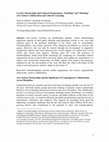
Transdisciplinary Theory, Practice and Education
Arts-science activities are proliferating globally, whilst demonstrating significant capacity to ... more Arts-science activities are proliferating globally, whilst demonstrating significant capacity to shift public thinking (and potentially action) in new ways that confront many of the pertinent challenges of our times, such as sustainability. Transdisciplinary arts-science practices offer enhanced possibilities to increase this agency. However, this can only be assured through the development of supportive institutional material and social infrastructures. In this chapter, we explore how to best enable and situate such projects, drawing upon the work and practices of transdisciplinary media artist Keith Armstrong. By comparing two Australian cultural organisations he has worked with (a university gallery and a public arts organisation), we analyse how institutional frameworks can better support such projects and programs, mitigated by the site and location of the work. We then ask, what is the future of this mode of activated practice and how might we best foster it?
School of Design Creative Industries Faculty, 2008
Creative Industries Faculty, Aug 1, 2003

Creative Industries Faculty, 2006
The design of Intimate Transactions was inspired by a range of discourses and practices drawn fro... more The design of Intimate Transactions was inspired by a range of discourses and practices drawn from the fields of critical ecologies, new media and innovative performance practices. At its core is what I refer to as an ecosophical praxis. Underpinned by an engagement with aspects of critical ecology, such a praxis sits within a social and political agenda that emphasises the integral place of social relationships within ecological systems. Because of its emphasis on relationships, an ecosophical praxis involves a socially driven approach to art practice. Collaboration and interactivity guide both the production of art and the design of how it will be experienced. Within the development of Intimate Transactions, I have therefore taken on the role of interdisciplinary collaborator and I have resituated audiences as performers who engage with ecological issues through their interactions with both the artwork and other participants. While this approach of combining ecological concerns with collaboration in production and experience is subtle and non-didactic, it ultimately governs every aspect of the work. In this essay, I will elaborate upon the ecosophical principles that have influenced the design of Intimate Transactions. I will also reflect upon the iterative design process and the progress of Intimate Transactions towards its current iteration as a participatory, embodied, networked and collaborative new media artwork. By charting the gradual refinement of its design, I will show how this project has come to fulfil Gablik’s prediction of art that facilitates an understanding of complex ecological concerns and social participation.

N a, Nov 17, 2007
The Last Generation is a laser-cut, plywood sculpture (1.2x1.2x0.3m) containing 52 miniature red ... more The Last Generation is a laser-cut, plywood sculpture (1.2x1.2x0.3m) containing 52 miniature red scrolling LED text modules. It is shaped in the form of a low resolution greyscale computer icon once widely used to represent the 'Save as - to floppy disc” function on greyscale computer monitors. Each text alludes both to that which has been lost through rapid technological progression & the long term ecological damage being created through their rapid transition of technological objects from desirable commodity to waste stream.----- The scrolling texts are intentionally blurred as a tactic for drawing attention to the constant superceding of prior technological products in favour of those with incrementally higher resolutions (often far in excess of user requirements). The work therefore sought to question the ICT industry’s lack of clear policies in terms of avoiding pre-planned obsolescence in their products as well as the toxicity of commonly employed materials – an agenda which at that that time had garnered limited governmental attention. The Last Generation was commissioned for a National touring design/art/craft exhibition in 2007-8 and has future public showings booked for 2009.

Mildura Arts Centre, Sep 5, 2013
The Re-introduction Project began with an art-science research residency in 2012, funded through ... more The Re-introduction Project began with an art-science research residency in 2012, funded through the Australian 'Synapse' art-science residency program. It was developed in partnership with the Australian Wildlife Conservancy, Australia's largest private conservation agency and their South-East regional scientist Matt Hayward and conducted through a series of seven high intensity field-trips to AWC’s remote properties in VIC, NSW and SA. These trips coincided with key times at which the AWC’s mobile scientific teams were undertaking intensive scientific activities. The program coincided with specific events that senior scientist collaborator Dr Matt Hayward led in 2012 at Mallee Regions (Yookamurra, Scotia and Buckaringa), Lake Eyre Basin (Kalamurina) and Sydney (North Head). The initial outcome of the project was the work Pitfall (An Opportunistic Survey) - a new media installation created in light, media, object, text and sound presented near the AWC headquarters at Mildura in far NW Victoria. Pitfall built upon ideas and cross disciplinary processes developed during this residency/collaboration with Australian Wildlife Conservancy inspired by working with their ecological scientists during pitfall-trap survey events used to survey small mammals and invertebrates. ‘Pitfall’ was designed in response to a playful survey that I asked the AWC scientists to engage with around ideas of avoiding ecological pitfalls into the future. This continually-evolving artwork was built from multiple screens, a tabletop landscape mapped with projections, fibre optics, 3D spatial sound and infrared night imagery.

School of Design Creative Industries Faculty, Apr 30, 2015
In recent years I have begun to integrate Creative Robotics into my Ecosophically-led art practic... more In recent years I have begun to integrate Creative Robotics into my Ecosophically-led art practices – which I have long deployed to investigate, materialise and engage thorny, ecological questions of the Anthropocene, seeking to understand how such forms of practice may promote the cultural conditions required to assure, rather than degrade, our collective futures. Many of us would instinctively conceive of robotics as an industrially driven endeavor, shaped by the pursuit of relentless efficiencies. Instead I ask through my practices, might the nascent field of Creative Robotics still be able to emerge with radically different frames of intention? Might creative practitioners still be able to shape experiences using robotic media that retain a healthy criticality towards such productivist lineages? Could this nascent form even bring forward fresh new techniques and assemblages that better encourage conversations around sustaining a future for the future, and, if so, which of its characteristics presents the greatest opportunities? I therefore ask, when Creative Robotics and Ecosophical Practice combine forces in strategic intervention, what qualities of this hybrid might best further the central aims of Ecosophical Practice – encouraging cultural conditions required to assure a future for the future?
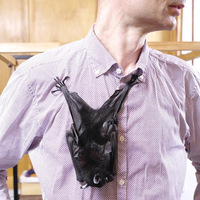



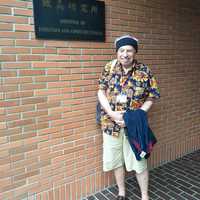
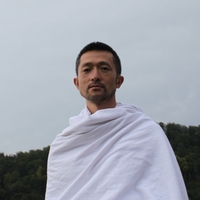
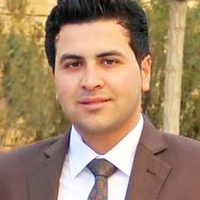
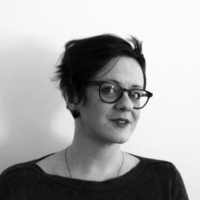


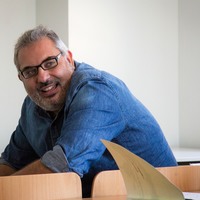
Uploads
Papers by Keith Armstrong